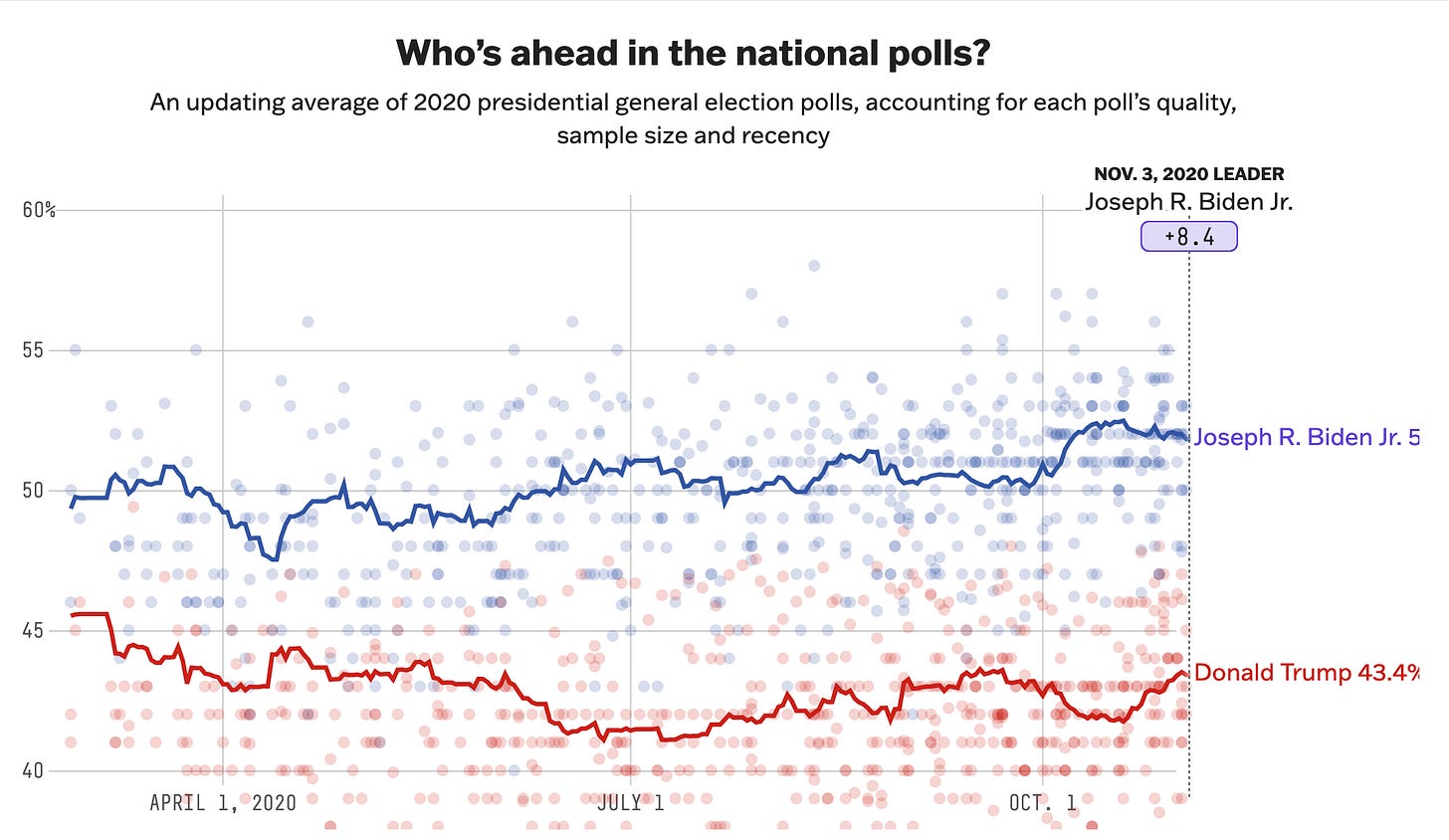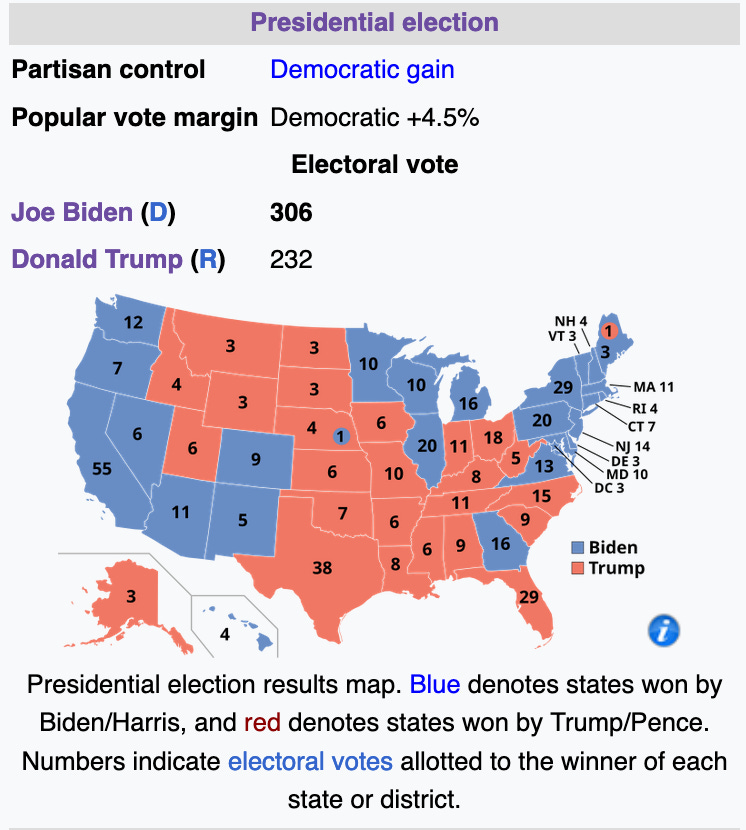Barring a Massive Trump-Vance Implosion, The Presidential Election Is Over (Really)
The focus should be on retaining the U.S. House and taking back the U.S. Senate so that Trump can deliver for Americans starting on January 20, 2025.
Earlier today on The Bruce Hooley Show, I repeated what I said earlier this week in an Irish National Radio interview that the presidential election was over (you should listen to the interview as I dive into how the 2028 race will impact Mike DeWine’s selection to fill J.D. Vance’s Senate seat). Yes, I realize that Donald Trump still needs to give the right kind of speech tonight and there are still three-and-a-half months to go before voting ends, but history shows unequivocally that the hole Joe Biden and the Democrats are in currently is simply too deep for them to climb out of. Sure, Democrats could force Biden to step aside soon and replace him with a Kamala Harris-led ticket, but she does no better than he does and has long had WORSE approval ratings. Plus, too many Americans now believe that the Left and its media sycophants intentionally lied about Biden’s mental and physical decline, which will insulate Trump from whatever muck they throw at him next—and they will throw as much muck as they can scrap from the reprehensible pit from which they dig.
In terms of history, here is the skinny.
On Election Day in 2016, the average of national polling had Hillary Clinton ahead of Trump by a 45.7% to 41.8% average. That is why so many on the Left were driven to tears when Trump won. They were so confident Clinton would win and equally as confident a plurality of Americans would never support Trump that hubris defined the day and the media coverage until late in the evening.
As you know, despite her consistent polling advantage and lead on Election Day, Trump beat Clinton in the Electoral College by a 304 to 227 margin to become the 45th President of the United States. The explanation for this shocking results were two-fold. First, Trump consistently underperforms in polls because people are reluctant to admit they are supporting him. Secondly, national polling oversamples large Democrat states like California, Illinois, New York, and New Jersey, as well as urban areas dominated by Democrats, so a national popular vote lead doesn’t equate to an Electoral College victory. The 2016 election showed us that a roughly 4% national polling lead isn’t enough to win the Electoral College if you are a Democrat. As you know, Trump won by 77,000 votes in three states.
Four years later, Biden led Trump on Election Day in national polling by 8.4% (51.8% to 43.4%). That national polling advantage, however, was barely enough for Biden to defeat Trump in the Electoral College where he eked out a 306 to 232 victory. Biden’s victory was even smaller than Trump’s 2016 win, as he beat Trump by 43,000 votes in three states.
These two presidential elections, therefore, tell us that Democrats need to be ahead by a substantial amount in national polling to secure an Electoral College victory. We know it must be far more than 4% and likely close to or more than 8% for a Democrat to win enough states to secure the White House. As of today, Trump holds a 2.6% lead over Biden in the national polling average. That means Biden (or Harris) has 110 days to reverse the polling deficit at least 10.6-percentage points. More pointedly, with early voting starting on September 20 in Minnesota, South Dakota, and Virginia, Biden (or Harris) only really has sixty-four days to turn things around. It would be an understatement to say such a reversal, given everything we know and where things stand today, is anything but a very, very long putt.
Thus, the 2024 Presidential Election is, in fact, over. The focus should be on retaining the U.S. House and taking back the U.S. Senate so that Trump can deliver for Americans starting on January 20, 2025. Based on the latest state polling (which is really all that matters), Trump is projected to win the Electoral College by a 325 to 213 margin, which is very close to Barack Obama’s 2012 victory over Mitt Romney (332 to 206) and approaching Obama’s “historic” 2008 win over John McCain (365 to 173) (Trump already bested George W. Bush’s 2000 and 2004 wins). Should Trump succeed at capturing Maine, Minnesota, Nebraska’s 2CD, New Hampshire, and New Mexico, which are coming into play, he would reach 348 Electoral Votes, which honestly is about is high as a Republican can get in the modern era in which the Red-Blue divide is so firm (i.e., no Republican can win the Left Coast, Illinois, New York, New Jersey, or the rest of the Upper Atlantic). Frankly, a Republican hitting 348 Electoral Votes should be considered a modern day landslide.
P.S. As the Democrat elite aim to force Biden out, read this very interesting take by David Harsanyi in The Federalist, "Why Would Any Legit Dem Presidential Prospect Jump Into This Mess?"









